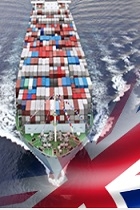The Human Element in Shipping: Making Mistakes

In part three of 'The Human Element' we examine 'Making Mistakes'. Making mistakes allows us to develop skills and to learn something – by simply working with the notion that real outcomes and desired outcomes are equal. Making mistakes is not the problem; the problem is the seriousness of the consequences that result from mistakes in the context our industry.
There are three main types of mistakes:
* Skill-based mistakes
* Rule-based mistakes
* Knowledge-based mistakes

If we forget to give way for a vessel or wrongly assume that a give-way-vessel will always give wa,y then it is a rule-based mistake. These events help us to categorize mistakes and actively work towards mistake avoidance.
There are a number of factors which can make any of these mistakes more likely.
On an individual basis:
* Stress and inadequate resting
* Insufficient training
* Bad communication
On an organizational basis:
* Inadequate time allotted for tasks
* Poor equipment design
* Bad safety culture
Unfortunately, these factors can also transform a normal mistake into a disaster as additionally they affect the ability to recover from a mistake or to stop it before it becomes dangerous.
Exhaustive research about how human mistakes occur shows that the combination of several adverse circumstances create catastrophic events. This raises the interesting question of how we can prevent mistakes from becoming disasters.
Mistakes: traditional and modern interpretation
Nowadays there are two main approaches, each based on a different interpretation of the source of mistakes. The traditional interpretation dictates that mistakes are governed by cause and effect, therefore, rules and standing orders are introduced to avoid possible causes.
Over time, and as new accidents happen, these rule sets become bigger and bigger.
This approach leads to counter-actions as companies and crews value efficiency more than rules, which are then often broken or bent.
Another problem is that mistakes tend to be invisible when they happen and, so long as they do not lead to disasters or prompt us to take action, only history will reveal whether or not a mistake occurred.
A newer approach to interpret how mistakes happen is to consider them taking place within a complex, unpredictable system – a world of circular interactions and complex behaviour.
This brings up a number of points. First, humans create safety and no system is perfect, hence humans need a degree of freedom in their decision-making to cope with upcoming threats. Second, organizations are a living entity and safety is influenced by a number of internal and external factors, including politics.
The main problem is that changes arising in one department can influence the safety and chance of failure within another one.
“The Human Element – A Guide to Human Behavior in the Shipping Industry” points out that organizations are responsible for creating the behavior of their employees, so they cannot complain about such behaviour.

How to protect against the results of mistakes?
Expertise must be protected and exploited: Many masters today seek shore-based jobs as the likelihood of criminal charges has increased significantly.
The fault lines within an organization are a real risk to safety-critical operations, for example between ship owners and crew, managersand operators, or in the differences between training and practice.
Players in the shipping industry need a system-based approach to making decisions: All members influence each other, therefore finding solutions that suit one party but ignore the needs of others endangers all.
And there are positive benefits in implementing a just culture vs a blame culture, including:
* Increased reporting of unsafe incidents
* Increased trust between all levels of the workforce
* Decreased numbers of incidents and accidents
* Decreased operational costs due to safer behaviour, higher workforce motivation and morale
Related articles:
A Guide to the Human Element by the UK MCA
Human Behaviour in the Shipping Industry: Risk Taking
*Image credits: Opensource/Flickr/Jisc
reminding us that humans need to keep pace.
The Human Element: A Guide to Human Behaviour in the Shipping Industry
- See more at: http://www.onboardonline.com/industry-article-index/safety-and-medical/a-guide-to-the-human-element-by-the-uk-mca/#sthash.aOoPw74C.dpuf


Post your comment
You cannot post comments until you have logged in.
Login to post a commentComments
No one has commented on this page yet.
RSS feed for comments on this page | RSS feed for all comments